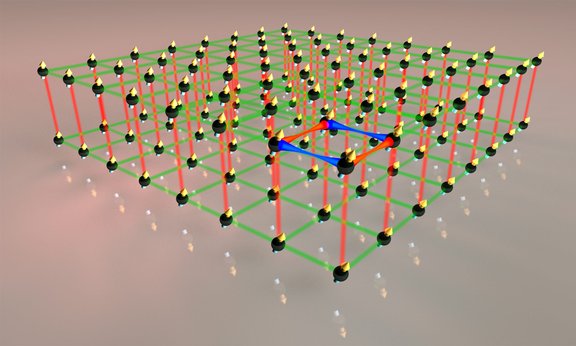Simulations are a popular tool to study physical processes that cannot be investigated experimentally in detail. For example, scientists encounter challenges when investigating physical processes in materials since their properties are determined by the interactions of single particles, which are hardly measurable directly. Conventional computers quickly reach their limits when dealing with these complex simulations. At the beginning of the 1980s, Richard Feynman proposed to simulate these processes in a quantum system to overcome this obstacle. Two decades later, Ignacio Cirac and Peter Zoller presented concrete concepts of how quantum processes could be studied by using ultracold atoms confined in optical lattices. In the last few years, this approach has proven itself in practice and is now broadly applied in experiments. “We are able to control ultracold particles well in experiments and this has provided us with new insights into physical properties,” says Francesca Ferlaino from the Institute for Experimental Physics of the University of Innsbruck and the Institute for Quantum Optics and Quantum Information of the Austrian Academy of Sciences. In collaboration with Peter Zoller’s team of theoretical physicists, her research team has now extended this approach for quantum simulations and laid the groundwork for future new research: For the first time, the physicists were able to quantitatively measure long-range interactions between magnetic atoms in optical lattices.
Experimental tool box for matter
Many studies have focused on the investigation of the interaction of short-range particles. “In contrast, we are working with strongly magnetic atoms, which can also interact over long distances,” says co-author Manfred Mark. For their experiment the physicists prepared an ultracold gas of erbium atoms – a Bose-Einstein condensate – in a three dimensional optical lattice of laser beams. In this simulated solid-body crystal, the particles were arranged similar to eggs in a carton. The distance between the particles was seven times their wave function in the Innsbruck experiment. “By using a magnetic field we are able to directly change the direction of the mini magnets and precisely control how the particles interact – attracting or repelling each other,” explains first author Simon Baier.
A search for exotic quantum phases
“Our collaboration with Zoller, Cai Zi and Mikhail Baranov was indispensable for understanding our measurement results comprehensively,” underlines Francesca Ferlaino. “Our work is another important step towards a better understanding of quantum matter of dipolar atoms because their nature is a lot more complex than the atoms used for ultracold quantum gases in other experiments.” The research results also lay the groundwork for future studies of novel exotic many-body quantum phases such as checkerboard and stripe phases, which may be created by long-range interactions. “Our study opens the door to finally being able to measure these type of phases,” says Simon Baier, who is already looking into the future. “In principle, we should be able to do this in our experiments as well but we will need to cool the atoms even further from currently 70nK to approximately 2nK.”
The research is supported by the Austrian Science Fund (FWF) and the European Research Council (ERC) among others.

